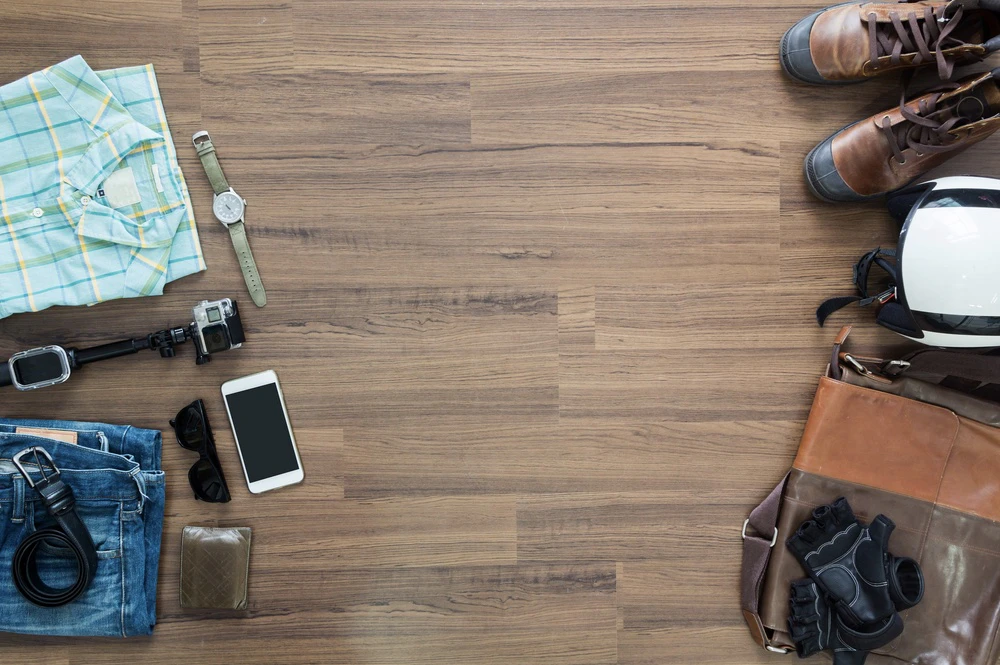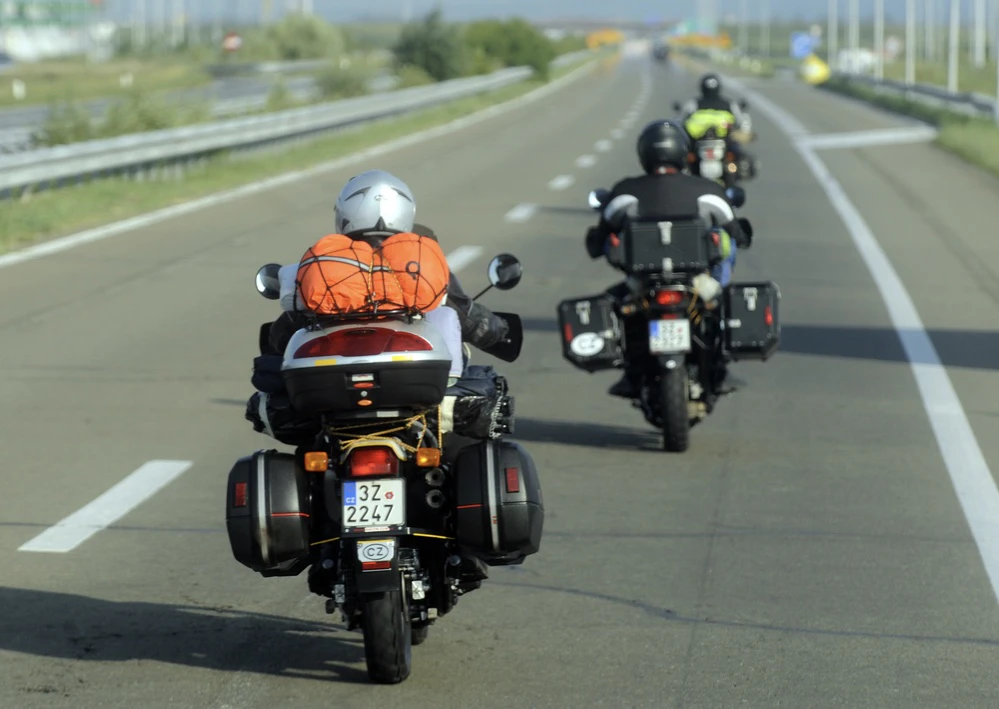back to the blog
14 Tips for Packing Your Motorcycle for a Long Trip

Jake T · June 18, 2021
A motorcycle can take you just about anywhere, from the coast to the mountains to the desert, and everywhere in between. But every experienced traveller knows that preparation and good packing are key for getting to your destination. So, when you’re working with the space constraints of packing a motorcycle, how can you make sure to get it right?
Packing luggage on a motorcycle takes a little bit of know-how, but most of it is common sense once you understand. Below, we’ll share 14 important tips for packing your luggage on a motorcycle trip.
 Source: My Life Graphic/Shutterstock.com
Source: My Life Graphic/Shutterstock.com
1. Slim it down.
Packing light should be your guiding principle. Evaluate every bit of space you can save and what the tradeoffs for doing so are. Be discerning about what you do need and what you don’t, and learn to do more with less wherever possible. Do you need Bluetooth motorcycle speakers and a pair of headphones? Maybe you do, but make yourself justify it if so.
2. Heavy stuff goes on the bottom.
Always put the heaviest items into your luggage first and then stack on top of them, rather than vice versa. This will help keep the weight balanced and avoid making it top-heavy. Your heaviest items should also be in the bag that’s closest to the bike, preferably one that’s attached to it directly.
3. Roll up your clothes instead of folding them.
Your clothes can take up a lot of space in your luggage, especially bulky things like jeans. That’s why it’s a great idea to roll up your clothes when you pack rather than folding them. By rolling them into a burrito-like form, you can conserve a substantial amount of space in your bag. This tip works for packing in general, not just for a motorcycle trip!
4. Pack for versatility.
You can reduce what you need by packing more rugged and versatile gear. An all-weather motorcycle jacket with a removable liner can eliminate the need for extra outerwear. A good pair of motorcycle touring boots, meanwhile, should be waterproof and made of durable materials that can withstand bad weather conditions.
5. Leave a little room.
Avoid packing your luggage so tightly that there’s not a smidgen of room left anywhere. You might want to bring some souvenirs home from your trip—where’s that Sturgis beer stein going to go? Plus, a fully packed out bag can become progressively harder to work with as your trip goes on and your careful packing system will tend to become more disorderly.
6. Put things inside your shoes.
If you’re packing an extra pair of shoes, don’t forget to use the space inside them to store other things. A normal pair of shoes can often hold some shirts or underwear, and boots may be able to hold even more.
 Source: bibiphoto/Shutterstock.com
Source: bibiphoto/Shutterstock.com
7. Don’t forget about entertainment.
Think about how you’ll keep yourself amused, both on the road and during downtime. A pair of Bluetooth motorcycle helmet speakers is an invaluable addition to your kit for listening to music or podcasts, and a book is great if you’re going to have some time to yourself in nature. Plus, a book never requires Wi-Fi or 4G, which might be scarce where you’re going.
8. Go easy on the backpack.
Even if you have a great motorcycle backpack, resist the temptation to overload it. Riding with a heavy load in your backpack can make your ride significantly less comfortable and tire you out more quickly. Also, if you don’t have a proper motorcycle backpack, get one. They’re designed to be ergonomic for riders, and many have extra strap adjustment features that make them more comfy to ride with.
9. Organize and categorize.
Nobody likes fishing through an overstuffed bag for an item they really need. Instead, try bringing multiple pieces of smaller luggage, or use luggage that has compartments. Then, break down your packing into categories, such as a bag for on-the-road essentials, a bag for clothes, a bag for toiletries, etc.
10. Share essentials if you’re riding with a group.
Doing a cross-country tour with friends or family? You might be able to share certain essentials. One person might be able to bring sunscreen, another could take care of toothpaste and a third could carry a basic repair kit. There’s no need to occupy extra space by duplicating things you only really need one of.
11. Use compression dry sacks.
Compression dry sacks are an outdoor adventurer’s best friend, and they work great for motorcyclists, too. These amazing bags help you pack more stuff into a smaller space, and they’re also waterproof so they help keep the items that you pack into them dry. They’re perfect for things like clothes that are both bulky and vulnerable to getting wet.
12. Don’t neglect security.
Think about how you’re going to secure your luggage. Some riders like to use saddlebags with built-in locks or padlocks, at least for their most valuable items—if not their whole kit. Try to always have things like your phone, wallet and keys on you any time you get off the bike. And, of course, make sure that your bike itself is secured with a robust security mechanism like a disc lock or an alarm system.
13. Remember your chargers.
If you’re like most people, you’ve got a ton of personal electronic devices, each with its own charger. Your phone, your tablet, your motorcycle Bluetooth communication system—they all need power and they all need chargers, so have a specific place you put them in your luggage and make sure they’re all accounted for every day. Don’t forget that you might be able to charge your Bluetooth motorcycle helmet intercom through your bike itself.
14. Zip ties and Bungee cords will get you out of a jam.
Even if you don’t think you need these things, bring some anyway. They take up very little space, and they can be used in a mind-boggling variety of different ways to secure your luggage. In an unexpected situation involving your luggage, bungee cords and zip ties can prove to be your best friends.
 Source: Polryaz/Shutterstock.com
Source: Polryaz/Shutterstock.com


